A lot of men and women suffer from broken capillaries on legs and the main cause is tearing in the capillary wall. Broken capillaries are also called spider veins because they tend to spread like the spider’s web.
Broken Capillaries on Legs
Problems in blood circulation and obstacles such as tiny valves are the main causes of broken capillaries. If one leads a sedentary lifestyle or crosses the legs very often, the condition may only worsen. Age is also an important factor as it increases the risk of broken capillaries. Other causes of broken capillaries are obesity, lack of exercise, birth control pills, leg injuries, and tumors in the abdomen. The factor of inheritance plays an important role in the broken capillaries' appearance too. Women are more affected than men.

Problem with Blood Clots
A blood clot is a blockage in blood vessels caused by a semi-hard or hard lump. Having a blood clot can lead to pain and extreme discomfort, as well as the inability to sleep due to the disturbance. Sometimes, a blood clot can block the blood flow completely, making matters worse. Also, there are cases when the clot moves to other areas of the body and poses an even bigger threat. Once the veins and arteries are blocked in the foot area, one commonly experiences a decrease in mobility regarding this body part. Acute pain manifesting through pins and needles sensation accompanied by a burning sensation is also a common occurrence. The surrounding tissues may swell, being a sign of inflammation. Poor circulation may lead to coldness and numbness, decreasing sensation in the area. The affected foot may undergo discoloration as well.
Cramps in Legs from Blocked Arteries
Blocked arteries in the legs can cause a person to suffer from cramps and pain in the hips, calves, or legs which usually occurs while one is walking, running, or sitting. This condition is known under the name peripheral arterial disease (PAD). The blood in the leg’s arteries gets clogged and that is what causes the blockage of the fluent blood flow to the leg.
The condition is often painful and its sufferers can experience a burning sensation in the affected leg. Claudication is a limp associated with a painful sensation caused by improper blood flow. PAD should be treated as soon as visible symptoms are noticed, mainly because people suffering from PAD are prone to cardiovascular stroke.
Older people whose arteries are clogged because of the buildup of atheromatous plaque or cholesterol often suffer from PAD. Sitting in one position for a long time can cause blocked arteries in the legs due to insufficient blood flow to the legs. High cholesterol levels, high blood pressure, smoking, diabetes, clotting disorders, aneurysms, deep vein thrombosis, and atrial fibrillation can also be some causes of this condition.
A person needs to be physically active and lead a healthy lifestyle in order not to suffer from blocked arteries in the legs. The symptoms of PAD may or may not include weakness and cramps in the hips, thighs, calves, and legs, pain in the legs, and numb and cold feet.
- Spider veins rarely cause health problems, though they can occasionally become painful. They can, however, be a significant cosmetic nuisance, and treatments primarily aim to improve appearance.
- Spider veins are the result of abnormalities in the horizontal vascular plexus of capillary loops in the skin and can have arterial or venous origins. Venous spider veins are raised, blue or purple, and are often between 1mm and 3mm in diameter. In contrast, those originating from the arterial capillary loops are flat, appear pink or red with a diameter of 0.1mm-1.0mm. In the legs, they are usually about 180 micrometers to 1mm deep in the skin and are composed of a feeder vessel and ectatic venous sprouts found in the reticular dermis.
- Spider veins are the result of abnormalities in the horizontal vascular plexus of capillary loops in the skin and can have arterial or venous origins. Venous spider veins are raised, blue or purple, and are often between 1mm and 3mm in diameter. In contrast, those originating from the arterial capillary loops are flat, appear pink or red with a diameter of 0.1mm-1.0mm. In the legs, they are usually about 180 micrometers to 1mm deep in the skin and are composed of a feeder vessel and ectatic venous sprouts found in the reticular dermis.
- The exact pathophysiology of spider veins remains unknown. Some theories have suggested that spider veins arise from varicose veins and are secondary to a similar mechanism of valvular incompetence in chronic venous disease. Interestingly, one study found that only 22.9% of patients with spider veins had evidence of venous incompetence.
- Numerous studies on the epidemiology of spider veins concluded that most adults will eventually develop some form of spider veins during their life. The typical age of presentation is between 30 and 50 years old. Ruckley et al. studied 1566 randomly selected adults in Scotland and reported that 88% of women and 79% of men had spider veins in the right leg. 98% of those affected had very mild symptoms.
- Spider veins are predominantly an aesthetic problem. One survey reported telangiectasias of the lower limb as the most concerning cosmetic problem for American women. The majority of patients are asymptomatic; however, a minority of patients who do have symptoms often complain of burning, itching, pain, cramps, or leg fatigue.
- The diagnosis of spider veins is a clinical one based on history and examination. There are no lab tests that are useful in the diagnosis of spider veins. Imaging studies can be helpful in the mapping of the venous system if chronic venous insufficiency is suspected. These include duplex ultrasound, contrast venography, and magnetic resonance venography (MRV).
- Spider veins are generally harmless and asymptomatic, and the majority of patients seek treatment to reduce or remove them for cosmetic reasons. Treatment includes sclerotherapy, intense pulse light treatment (IPLT), thermocoagulation, and microphlebectomy. Patient factors influence the type of treatments that can be used alone or in combination.
Treatment for Capillary and Artery Problems
Broken capillaries do not require any necessary treatment, as they are considered to be an esthetical problem. A lot of women who have broken capillaries are embarrassed to wear skirts and short pants because their broken capillaries can be seen.
Sclerotherapy and laser therapy are the main options for treating broken capillaries. Sclerotherapy involves an injected solution used to close and harden the vein. Some creams contain vitamins K, C, and E available on the market and they can be used in the treatment of broken capillaries.
By making a few changes in the lifestyle, one can prevent broken capillaries on time. The best way is to exercise regularly and avoid sitting or standing in one position for a long time. Keeping optimal body weight and avoiding crossing the legs are also highly recommended.
The treatment for blood clots may include blood thinners which prevent the existing clot from getting larger and gradually dissolve it completely. These medications can be administered intravenously or are taken as pills. Aspirin, heparin, and warfarin are the most commonly used blood thinners. One should also consume plenty of foods rich in salicylates and omega-3 fatty acids, dried fruit and nuts, fish oil, ginger, turmeric, and peppermint. Regular exercises are a must.
Those who suffer from cramps in their legs should use medications like statins to reduce cholesterol buildup in the body. Proper exercises are also highly recommended for the treatment of PAD. In some cases, beta-blockers, blood thinners, or ACE inhibitors have to be used. Medicamentous treatment failure requires surgery. Surgeries that help in removing the buildup of plaque are bypass, thrombolytic therapy, and endarterectomy.



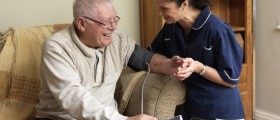
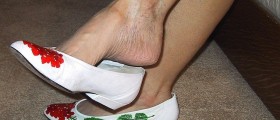
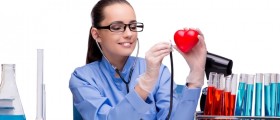
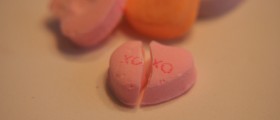


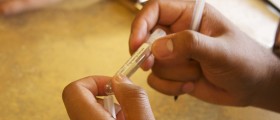

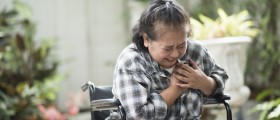
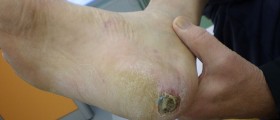

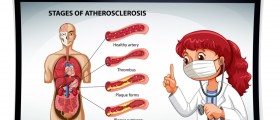
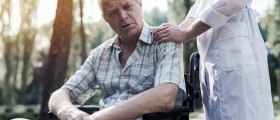

Your thoughts on this
Loading...